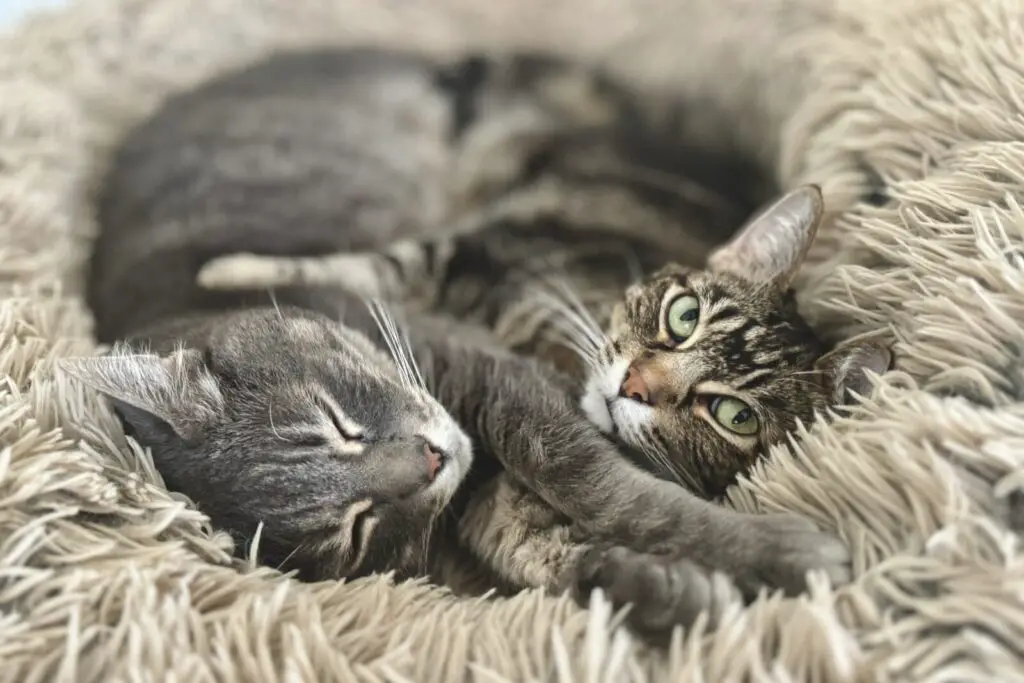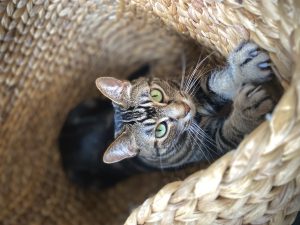How Do Cats Purr? The Science Behind the Mysterious and Wonderful Sound
That gentle rumble from your contented cat represents one of science’s most intriguing mysteries.
While researchers have studied purring for decades, recent discoveries are dramatically changing our understanding of this unique sound.
Key Takeaways:
- Recent research challenges 50-year-old theories
- Cats have newly discovered “pads” in their vocal cords
- They produce surprisingly low sounds for their size
- The mechanism may be more automatic than thought
- Many questions still remain

Leading Theories Through Time
The quest to understand how cats purr has led scientists down various paths. For decades, the leading explanation centered on what researchers called the “active muscle contraction hypothesis.”
The 1970s Theory
From the 1970s until very recently, most scientists believed cats created their purr by actively contracting and relaxing their laryngeal muscles about 30 times per second.
This theory, based on measurements of electrical activity in cats’ throat muscles, suggested that purring required constant input from the brain – making it quite different from other animal vocalizations.
Traditional Understanding
Most mammal sounds, including cats’ meows and hisses, work through a passive process: the brain signals vocal cords to press together, and then airflow creates self-sustaining vibrations.
Scientists thought purring was special because it seemed to require active, continuous muscle control instead of this passive mechanism.
The theory is known as the active muscle contraction hypothesis.
The Size Paradox
One of the most puzzling aspects of cat purring has always been how such small animals produce such low sounds.
Think of musical instruments: a large double bass produces lower notes than a small violin because of its size.
Similarly, elephants make lower sounds than smaller animals because they have longer vocal cords.
Yet domestic cats, weighing only about ten pounds, can produce sounds as low as 20-30 hertz – frequencies you might expect from a much larger animal. This seeming contradiction has long puzzled scientists.
Recent Breakthroughs
A new study may have finally solved this mystery. Scientists have discovered specialized “pads” embedded within cats’ vocal cords – extra layers of fatty tissue that allow them to vibrate at surprisingly low frequencies despite their small size.
The New Theory
Rather than requiring constant muscle control, purring might work more like other animal vocalizations:
- The brain signals vocal cords to press together
- Air flows through the larynx
- The specialized pads affect vibration
- The process becomes self-sustaining
- No constant brain input needed
This mechanism appears similar to human “vocal fry” – that low, creaky sound sometimes heard in speech.
Research Methods
Studying how cats purr presents [LINK: unique challenges for scientists]. Recent breakthroughs came from an innovative approach – studying larynges removed from cats that had been humanely euthanized due to terminal illness (with owner consent).
The Experiment
Scientists conducted a crucial test: they pinched the vocal cords together and pumped warm, humidified air through them. This setup guaranteed that any sound produced occurred without muscle contractions or brain input.
To their surprise, all eight larynges in the study produced purring sounds between 25 and 30 hertz – suggesting purring might be a passive process after all.
Potential Explanation for the Low Frequency
The findings also may provide insight into how such a small animal produces such a low frequency.
The fatty pads in the vocal cords increase the density of the tissue, perhaps thereby causing it to vibrate more slowly.
Scientific Debate
Not all researchers are convinced by these findings. Some argue that manipulation of removed larynges may not completely capture what the larynx does in a living cat.
The Research Challenge
A fundamental problem remains: how do you study purring in live cats? Traditional research methods face a paradox:
- Cats only purr when comfortable, not on command
- Research equipment and lab settings disturb cats and make them unlikely to purr
- Natural purring stops when weird instruments are introduced
- It may only be possible to measure exactly what’s happening in the larynx by inserting a probe – this is an ethical and humane nonstarter
Current Understanding
The recent discoveries about vocal cord “pads” and passive vibration represent a significant shift in how scientists think about purring.
While questions remain, we now have a clearer picture of this unique feline ability.
What We Know
Scientists now believe purring likely involves both passive and active elements:
- Special, dense tissue pads enable low frequencies
- The process may be more automatic than previously thought
- The mechanism differs from other cat vocalizations
- The brain initiates but may not actively control purring
Remaining Questions
Several mysteries still need solving:
- How much brain control is actually involved?
- Why do some cats purr more than others?
- How exactly do the vocal pads work?
- What role does muscle activity play?
- How did this ability evolve?
Last Meows
The story of how cats purr continues to evolve as new research challenges long-held beliefs.
Recent discoveries about specialized vocal cord pads and passive vibration mechanisms have revolutionized our understanding, yet mysteries persist.
A Changing Picture But the Mystery Remains
What started as a simple theory about active muscle contractions in the 1970s has developed into a more complex and fascinating story.
We now know that cats possess unique anatomical features that allow them to produce astonishingly low-frequency sounds for their size.
The mechanism appears more sophisticated – and perhaps more elegant – than scientists originally thought.
Looking Ahead
Scientists continue seeking new ways to study purring without disturbing cats in the process. As widely beloved as purring is, the question of precisely how they do it remains unsolved..
